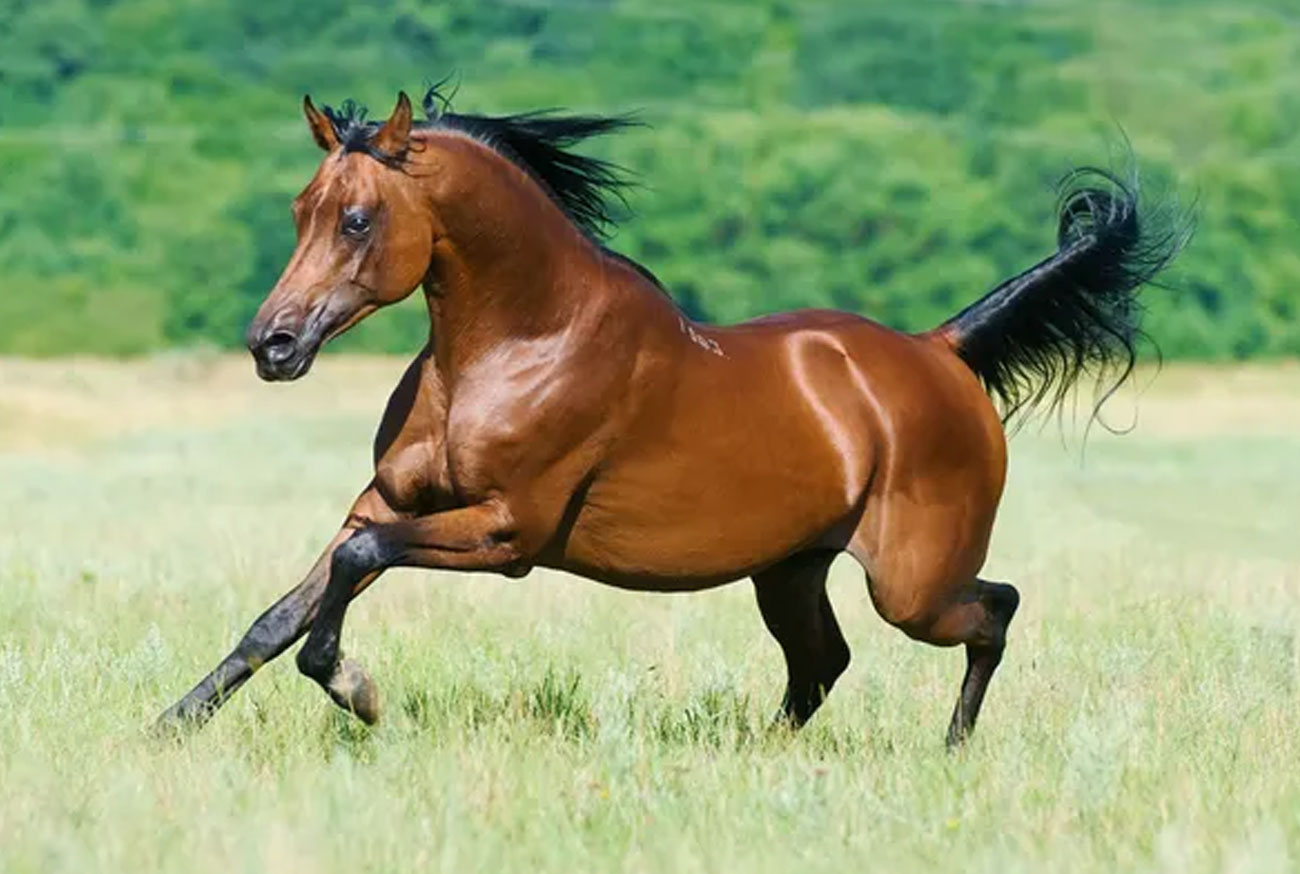This article will explore the world of the bay horse, covering everything you need to know: from physical characteristics to essential care, as well as curiosities and useful information for those who are, or wish to become, a bay horse caretaker. With a friendly and engaging tone, we hope you fall even more in love with these incredible horses. Get ready for a journey through the world of bay horses and discover why they have captured the hearts of so many!
What is a Bay Horse?
The bay horse is recognized by its brown or yellow-colored coat, with a mane and tail that are typically black, features that bring an unmatched elegance. This type of coloring can also include shades from dark brown to lighter chestnut, giving each bay horse a unique appearance. Bay horses are known for their physical endurance and adaptability to different climatic conditions, making them ideal for various activities, from leisure riding to competitions.

Physical Characteristics of the Bay Horse
One of the most distinctive features of the bay horse is its coat. With a yellowish or brown base color, these horses have a mane and tail in dark tones that beautifully contrast with the rest of their body. Their legs can also exhibit darker coloring, giving the impression of "socks" or natural "boots." Bay horses possess an athletic and muscular build, which gives them great stamina and agility. Generally, they are medium to large-sized animals with a robust physical structure, making them suitable for work, sports, and leisure riding.
Difference Between Bay and Other Coats
The bay coat is unique and should not be confused with other similar colors. The main difference lies in the combination of a base color with dark mane and tail, which distinguishes it, for example, from chestnut horses, which have reddish tones without the dark extremities. It's essential to understand these differences to identify a bay horse accurately.
Personality and Temperament
The bay horse typically has a balanced and friendly temperament, which makes it easy to live with humans. They are known for being calm, intelligent, and easy to train, qualities that make them excellent companions for both beginners and experienced riders. This natural docility, combined with their resilience and versatility, makes bay horses highly sought after for leisure and competitive activities.
Essential Care for the Bay Horse
Caring for a bay horse requires dedication and some specific care to maintain the animal's health and well-being. Here are the main aspects to consider:
Nutrition
The bay horse’s diet, like any horse’s, should be balanced and nutrient-rich. Basic diet staples include quality hay, grains, and pasture. It’s essential to supplement their diet with vitamins and minerals, as recommended by a veterinarian, to ensure the horse's health and energy. Ideally, maintain a regular feeding routine, avoiding sudden diet changes, which can cause digestive issues.
Hydration
Keeping the bay horse well-hydrated is crucial, especially during physical activities. Ensure constant access to clean, fresh water. In warmer climates, increase water availability and watch for signs of dehydration, such as dry mucous membranes or decreased urination.
Hygiene and Coat Care
The bay horse’s coat requires specific care to maintain its characteristic shine. Regular brushing helps remove dirt and keeps the fur aligned and healthy. Additionally, occasional baths are recommended, especially in warmer seasons. It’s important to dry the animal well after a bath, particularly the mane and tail, to prevent irritation and infections.
Exercise and Activity
The bay horse is naturally athletic and thus requires regular exercise to maintain physical fitness. Walking, trotting, and cantering are activities that contribute to the animal’s physical and mental well-being. Additionally, these exercises strengthen the muscles, improve stamina, and help expend energy in a healthy way.
Health and Veterinary Visits
Like any horse, the bay needs regular veterinary check-ups to ensure its health. Vaccinations should always be up-to-date, as should deworming, which helps prevent parasitic diseases. Veterinary consultations are essential to assess general health and prevent potential problems early on.
Fun Facts About the Bay Horse
Beyond its beauty and stamina, the bay horse is full of interesting facts that make it even more fascinating. Here are some:
- Popularity in Pop Culture: In movies and series, bay horses are often chosen to represent noble and courageous characters due to their imposing appearance and trustworthy temperament.
- Symbolism: In some cultures, the bay horse symbolizes strength and loyalty and is considered a good luck charm.
- Diversity of Breeds: Although “bay” refers to coat color, horses of various breeds can have this coloring, from the Mangalarga Marchador to the Thoroughbred.
What is the Origin of the Bay Coat?
The bay coat occurs due to a specific genetic combination that results in a brown color with dark points. This color has been valued and preserved for centuries, especially in breeds used for work and combat, as bay horses were believed to be more resilient.
Bay Horse: A Lifelong Companion
The bay horse is undoubtedly an excellent choice for those seeking a loyal and resilient companion. With its beauty, intelligence, and versatility, it can adapt to various activities, becoming a true friend for life. Whether for leisure, competitions, or work, the bay horse stands out for its dedication and ease of interaction with humans.
Keep in Mind...
The bay horse is much more than a beautiful animal with unique coloring. It represents a cultural and historical heritage, symbolizing strength, resilience, and companionship. By understanding more about its characteristics, care, and history, you’re better prepared to appreciate and perhaps care for a bay horse. Share this article on social media to help others learn more about this incredible animal!

















Add comment